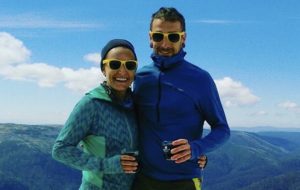Winter often brings about a sense of hibernation, with people retreating indoors and forgoing their fitness routines. However, embracing aerobic training during the winter months can provide numerous benefits, including improved cardiovascular health, enhanced mental well-being, and the maintenance of overall fitness levels. In this essay, we will explore the advantages of aerobic training during winter, the challenges it may present, and strategies to overcome them, enabling individuals to stay active, motivated, and achieve their fitness goals even when faced with colder temperatures.
Engaging in aerobic training during winter yields several advantages for individuals of all fitness levels. Firstly, it strengthens the cardiovascular system, leading to increased heart efficiency, improved blood circulation, and enhanced endurance. Regular aerobic exercise, such as jogging, cycling, or swimming, helps maintain a healthy weight, lowers blood pressure, and reduces the risk of chronic diseases like heart disease and diabetes.
Secondly, aerobic training during winter plays a crucial role in combating the winter blues or seasonal affective disorder (SAD). Exercise releases endorphins, neurotransmitters responsible for boosting mood and alleviating stress and depression. This natural mood-enhancing effect is particularly valuable when daylight is limited and exposure to sunlight is diminished.
Lastly, maintaining aerobic fitness throughout winter prevents detraining and loss of progress made during warmer months. Consistency is key in achieving long-term fitness goals, and continuing aerobic training during winter ensures a seamless transition to the following seasons while minimizing the effort required to regain lost fitness.
Training aerobically during winter may present unique challenges. Cold weather, shorter days, and icy conditions can discourage even the most dedicated individuals. However, with the right mindset and planning, these obstacles can be overcome.
To combat the cold, dressing appropriately in layers, wearing moisture-wicking fabrics, and protecting extremities with gloves, hats, and scarves is essential. Furthermore, warming up indoors before heading outside can prepare the body for the chilly temperatures.
Shorter days can be addressed by adjusting training schedules. Opting for morning or lunchtime workouts maximises exposure to daylight and ensures motivation remains high. Alternatively, indoor aerobic activities like S&C treadmill running, or stationary cycling provide a safe and climate-controlled environment.
Utilising indoor tracks, joining the Davey Black strength and conditioning or Yoga classes for triathletes, or investing in home exercise equipment for the Davey Black online classes can offer safe alternatives when venturing outside is not feasible. Your triathlon coach will be able to recommend when you should complete these sessions within your triathlon training program.
Winter should not be a deterrent to aerobic training; instead, it should be seen as an opportunity for growth and progress. Engaging in regular aerobic exercise during the colder months provides numerous health benefits, uplifts mood, and ensures the maintenance of fitness levels. Overcoming the challenges of winter requires proper preparation, adapting training schedules, and exploring indoor or winter sports options. By embracing the chill, individuals can enjoy the unique experiences and rewards that come from pursuing aerobic training through winter, setting themselves up for success and a healthier, more active lifestyle.

